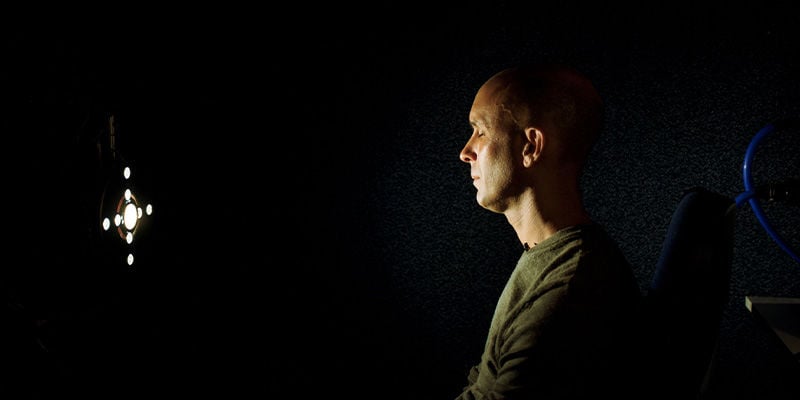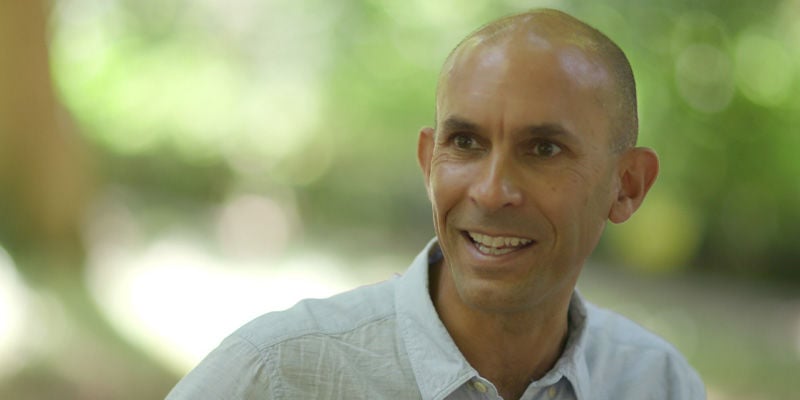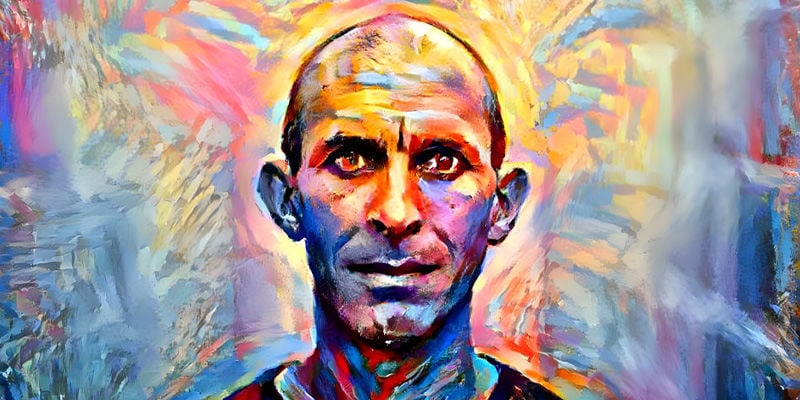
A Conversation About Psychedelics With Professor Anil Seth
Professor Anil Seth has written numerous papers on psychedelics, the brain, and consciousness. On top of that, he has written a book, spoken at TED Talks, and works on the Dream Machine and Perception Census.
We recently spoke to acclaimed neuroscientist Anil Seth. Much of Seth’s work focuses on psychedelics and the ways in which they affect the brain; both objectively, and subjectively in terms of perception. The majority of our conversation revolves around this element of his work.
Listen to the full interview below, or read on for a summary.
Who is Anil Seth?
Anil Seth is Professor of Cognitive and Computational Neuroscience at the University of Sussex, among other roles, and author of the bestselling book, Being You. Seth’s work focuses on attempting to understand the biological basis of consciousness. Within this research, he focuses on the psychedelic state and what we can learn from it.
Along with other scientists, philosophers, and artists, Seth is also spearheading the Perception Census. The Perception Census is an international effort to discover the ways in which each individual perceives the world, and to discover the differences and similarities between us. If you have time, try out the Perception Census yourself.
What is the Dream Machine?

The Dream Machine uses stroboscopic light to induce an altered state of consciousness. The science behind this dates back to the early 20th century. As part of a large team, including musician Jon Hopkins, Seth helped to design the Dream Machine, and has so far conducted research on over 20,000 participants.
The Dream Machine sits 20–30 people, who close their eyes as stroboscopic light flickers. This light, combined with a musical soundscape, induces a psychedelic-like state. Seth is eager to point out, however, that although phenomenologically this state may be similar to a psychedelic one, on a physical level, it is quite different.
Whereas psychedelic drugs influence brain chemistry and exert their effects that way, stroboscopic light has no effects on neurotransmitters (at least directly). Though only anecdotal, the Dream Machine team discovered that not only does the machine induce trance or trip-like experiences in people, but it may also help people to work through emotional issues. A potential explanation for this is that the novelty of the experience offers a break from everyday reality, and in doing so may offer a fresh perspective.
However, more research is required to fully understand these effects.
What is Seth’s most interesting research regarding psychedelics?

In his own opinion, the most interesting piece of research that Seth has conducted into psychedelics was also the first piece. In that research, the team discovered that psychedelics can cause the brain to enter a more random and disordered state. Up until that point, researchers had only ever discovered ways to bring this measure down—from a waking state. Psychedelics offer, as yet, the only means to increase this.
This research was swiftly interpreted by mainstream media as discovering a “higher state of consciousness”, but Seth himself disowns this view. He says that, while consciousness can be measured in the same way, all that is being measured is randomness in brain activity, and we don’t know whether this correlates to “consciousness”, especially as we can’t pin down what consciousness is in the first place.
Nevertheless, this research highlights the unique qualities of psychedelic drugs.
What is the “beast machine” theory of consciousness?

Seth has his own theory of consciousness—the “beast machine” theory, which is a term co-opted from the philosopher Descartes. In a nutshell, this theory posits that every conscious experience that we have, be it of our internal or external world, is some kind of prediction, and these predictions serve to keep the body alive and functioning. It’s worth noting that Seth is not the only person who suspects that conscious experience may be a predictive tool.
What is the "hard problem" of consciousness?
The beast machine theory is inspired by/in response to David Chalmers famous “hard problem” of consciousness. This hard problem asks why some systems—such as living creatures—give rise to conscious experience. In other words, why do some physical objects have an inner life, and others do not?
Seth responded to this with what he dubbed the “real problem” of consciousness. The real problem does not so much ask why or how consciousness exists, but to accept that it exists, and to aim to explain its properties and understand why it is different for individual living things.
Seth compares it to the once "hard problem" of life. What gives rise to life? What is life? These questions used to be at the forefront of philosophy and early science, and have never been satisfyingly answered. One example of where this issue still persists is in the disagreement over whether viruses constitute living beings.
On the whole, though, we now accept that things are alive, and that we can usually determine what lives and what doesn’t—even if we have no language to properly explain it. Seth argues that consciousness can be understood in a similar way—that it does exist, and we can usually tell what is imbued with it.
This view of consciousness is by no means universal, though. Many thinkers believe that consciousness extends much further than most expect, with some even believing that consciousness is a fundamental force in the universe. Others, however, believe that in fact nothing is conscious, and that it is an illusion.
Is the psychedelic state any more or less real than everyday reality?

Seth argues that, in subjective terms, an everyday waking state and psychedelic state are equally real—or “veridical”. However, this does not mean they are equally true representations of an objective, external reality.
A normal, waking state, he claims, is a truer representation of the outside world. He argues that the reason for this is that the brain has evolved to perceive and predict the outside world with a high degree of accuracy, as this increases the chances of keeping the body alive. Psychedelic drugs disrupt this predictive capacity.
If you’re interested in finding out more about Anil Seth and his work, you can take a look at his website: anilseth.com, where you can also find more information about his book, Being You. And you can find out more about the Dream Machine here. If you want to delve deeper into this conversation, listen to the interview at the top of the page.
-
 17 min
23 September 2022
An Interview With Jon Hopkins About Music For Psychedelic...
This conversation with Jon Hopkins explores the inspiration and motivation that led to the creation of Music for Psychedelic Therapy, a new album designed to be used alongside psychedelics to...
17 min
23 September 2022
An Interview With Jon Hopkins About Music For Psychedelic...
This conversation with Jon Hopkins explores the inspiration and motivation that led to the creation of Music for Psychedelic Therapy, a new album designed to be used alongside psychedelics to...
-
 5 min
1 August 2022
The 5 Most Potent Psychedelics
Find out about 5 of the strongest psychedelics around. Covering a little of the drug, and giving an overview of the effects, this list is in no way exhaustive, but should give you an idea of what...
5 min
1 August 2022
The 5 Most Potent Psychedelics
Find out about 5 of the strongest psychedelics around. Covering a little of the drug, and giving an overview of the effects, this list is in no way exhaustive, but should give you an idea of what...
-
 8 min
16 July 2020
LSD 101: An Overview
A comprehensive guide on LSD for anyone looking to gain a first impression of the drug. We cover LSD’s discovery and history, and its impact on art and culture. You will learn about the effects of...
8 min
16 July 2020
LSD 101: An Overview
A comprehensive guide on LSD for anyone looking to gain a first impression of the drug. We cover LSD’s discovery and history, and its impact on art and culture. You will learn about the effects of...
-
 8 min
13 June 2019
What To Know About Shrooms (Magic Mushrooms)
Magic mushrooms are treasured for their strong psychoactive properties, producing strong hallucinations, euphoria, altered thinking processes, and a distinct clarity unlike any other substance....
8 min
13 June 2019
What To Know About Shrooms (Magic Mushrooms)
Magic mushrooms are treasured for their strong psychoactive properties, producing strong hallucinations, euphoria, altered thinking processes, and a distinct clarity unlike any other substance....













 United States
United States










